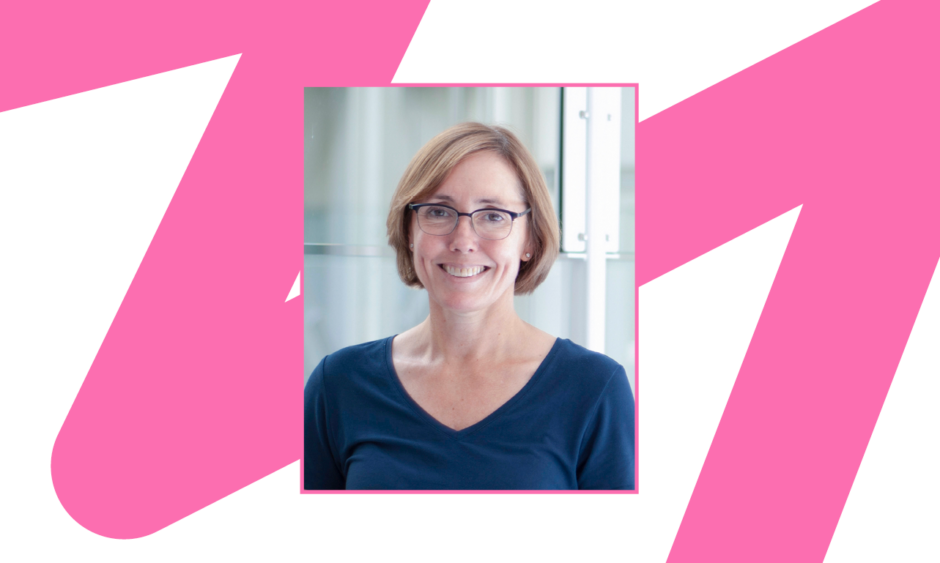Cathy Stinear | Director of the Clinical Neuroscience Laboratory in the Department of Medicine, University of Auckland, New Zealand; Chair of the Neurological Foundation of New Zealand’s Council
![]()
Cathy Stinear shared her thoughts and experiences within the field of neuroscience, focusing on the challenges of stroke recovery, changes within the field, and her role as Chair of the Neurological Foundation of New Zealand’s Council
Was there a particular event or person that encouraged you to pursue a career in neuroscience?
Neuroscience is my third career, so it might have been a process of elimination!
Do you think there are any misconceptions about your speciality?
When people think about neuroscience they often imagine people in white coats working at lab benches. And it’s true that a lot of great neuroscience looks exactly like this. The work that we do involves whole human beings, usually people in the hospital who have recently experienced a stroke. We use neurophysiological and neuroimaging techniques to understand how the brain is affected by stroke and the biology of recovery. People are sometimes surprised at the sophisticated neuroscience research that can be done with patients. It’s very rewarding to work directly with patients, rather than with animal models or cell cultures that are many steps removed from the problems we’re trying to solve.
You have specialised in predicting and promoting motor recovery after stroke. What are some of the unique challenges associated with stroke recovery?
It can be very difficult to make accurate predictions for individual patients. While it is true that most people with initially mild stroke symptoms usually have a good outcome, recovery can be much harder to predict for people with initially moderate to severe impairments. Some people with initially severe haemiparesis make very little improvement, while others go on to make a substantial recovery and have a good outcome. The problem is that you can’t know what to expect using clinical examination and experience alone. So the challenge is to make judicious and efficient use of motor system biomarkers to make accurate predictions for individual patients and then use these predictions to tailor rehabilitation plans and manage expectations. We have developed the PREP2 prediction tool that combines clinical and biomarker information within days of the stroke to accurately predict upper limb outcomes, 3 months after stroke. Our work has shown that this helps with setting appropriate rehabilitation goals and reduces the length of stay. We have also developed the TWIST prediction tool that combines clinical information 1 week after stroke to accurately predict both whether and when a patient will recover to independently walking.
One of your interests is the translation of neuroscience discoveries to clinical practice. Could you tell us more about what this often requires?
Understanding the problems that clinicians are trying to solve is an important first step. My research team is very fortunate to work in the hospital setting, in both acute and rehabilitation wards. Around half of the team are practicing clinicians in these wards, with first-hand knowledge of what’s needed to improve patient care. Embedding our research in the clinical environment, and embedding clinicians in our research team, means we’re asking good questions and coming up with practical answers. We have a big head start on translation and implementation because our discoveries are co-designed with clinicians and made with patients in the real-world clinical environment.
What are the most significant changes you have seen in the field of movement neuroscience since completing your PhD in 2004?
Technologies for capturing movement kinematics and measuring real-world activity have become widely accessible at lower cost, allowing researchers and clinicians to better understand the ways that people move in their daily lives. The challenge is making sure that the vast amounts of data that can be generated produce insights that are meaningful for patient care.
There has been interest from all areas of life science and healthcare towards artificial intelligence (AI). Is there room for AI in neuroimaging tools for predicting stroke outcomes for individual patients?
There’s exciting work underway using machine learning methods to predict stroke outcomes based on standard clinical imaging. It’s always important to think carefully about what is being predicted, how useful the prediction is, and how it will be communicated to patients and families.
What are some points of emphasis you incorporate into practice to be the best researcher and educator you can be?
Clinicians are sometimes discomfited by the idea of giving predictions to patients and families, for fear of demotivating them if the prediction is negative. However, prediction information can be safely shared with patients and families when clinicians have appropriate training for these conversations. We find that most patients want to know what to expect, even when it’s going to be a poor recovery. They are adults and deserve the opportunity to adjust their plans for life after stroke based on realistic information. If they don’t know what to expect, they can labour under false hopes for many months, even years, before finally coming to the realisation that they’re not going to make further improvements. By this time they have usually left our care, and we’re no longer available to support them as they come to this realisation. Delivering prediction information requires considerable skill, and when delivered in the first week or two of recovery it can help patients and families adjust more effectively to life after stroke, with rehabilitation therapies and our support.
Since your appointment as Chair of the Neurological Foundation of New Zealand’s Council, what has your proudest achievement been?
The Foundation supports PhD students with scholarships. These have had a similar value to the scholarships offered by the rest of the tertiary sector. Unfortunately, the sector has held these scholarships at an amount less than the minimum wage for several years. I’m very proud that the Foundation has increased the value of its PhD scholarships so they are now more than the minimum wage, and are equivalent to the living wage. The Foundation is the first scholarship provider in New Zealand to achieve this goal, and I’m very proud of our investment in tomorrow’s neuroscientists.








